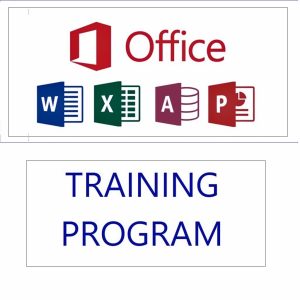If you have just one day to prepare for an Excel-related interview, your goal isn’t to learn everything — it’s to refresh the essentials, cover high-frequency questions, and get hands-on practice so you can answer with confidence.
Here’s a step-by-step crash plan (8–10 hours total):
⏰ Hour 1: Understand the Job Role
- Check the job description → Which Excel skills do they want? (e.g., data analysis, reporting, dashboards, VBA, Power Query).
- Identify focus areas → If it says MIS, focus more on reporting formulas. If Data Analyst, focus more on lookup, filters, and pivot tables.
- Quickly note down:
- Core functions mentioned
- Tools (Pivot Table, Power Query, Macros, SQL, etc.)
- Business context (sales reports, financial data, etc.)
⏰ Hours 2–4: Formula Mastery
Focus on 10–12 key formulas you will almost certainly be tested on:
| Formula / Function | Why Important | Quick Example |
|---|---|---|
VLOOKUP / XLOOKUP | Merge datasets, fetch related data | =XLOOKUP(101, A2:A100, B2:B100, "Not Found") |
INDEX + MATCH | Flexible lookups | =INDEX(Sales, MATCH("Apple", Product, 0)) |
IF + IFS | Conditional logic | =IF(B2>5000,"High","Low") |
SUMIF / SUMIFS | Conditional totals | =SUMIFS(Sales, Region, "East", Product, "Apple") |
COUNTIF / COUNTIFS | Count with conditions | =COUNTIFS(Region,"West", Sales, ">5000") |
TEXT functions (LEFT, RIGHT, MID, TRIM, LEN) | Clean & extract text | =LEFT(A2,5) |
FILTER | Dynamic filtering | =FILTER(A2:D100, Region="North") |
UNIQUE | Remove duplicates | =UNIQUE(Product) |
| Date functions (YEAR, MONTH, EOMONTH, TEXT) | Date-based analysis | =TEXT(A2,"MMM-YYYY") |
Action:
- Open Excel and type small practice datasets (10–15 rows).
- Try each formula 3–4 times until you can do it without looking up syntax.
⏰ Hours 5–6: Pivot Tables & Data Cleaning
- Create 2–3 quick Pivot Tables:
- Sales by Region and Month
- Top 5 products by revenue
- Practice:
- Sorting, filtering
- Grouping dates
- Adding calculated fields
- In Power Query:
- Remove duplicates
- Split columns
- Change data types
- Merge two tables
⏰ Hours 7–8: Practice Real Problems
- Download any sample dataset (e.g., sales data, HR data from Kaggle or random CSV).
- Do these exercises:
- Find top performer by sales
- Monthly sales trend
- Count customers who purchased more than 3 times
- Merge customer table with orders table
- Create a simple dashboard (Pivot + Slicer)
⏰ Hour 9: Review Common Interview Questions
Technical Qs:
- Difference between VLOOKUP and INDEX+MATCH?
- How to remove duplicates without affecting original data?
- How do you handle missing data in Excel?
- How to extract month name from a date?
- What is the difference between Absolute and Relative cell references?
Scenario Qs:
- “You have sales data; find the top 3 regions by revenue.”
- “Find customers who purchased in Jan but not in Feb.”
- “Your report shows wrong totals—how do you troubleshoot?”
⏰ Hour 10: Mock Drill
- Set a 30-min timer.
- Ask a friend (or yourself) to give you 5 tasks on a dataset.
- Solve them without Google — this simulates test conditions.
- After the drill, check your answers and note mistakes.
💡 Last-Minute Tips for the Interview
- Think out loud → Even if you don’t know the answer, walk through your approach.
- Show shortcut keys (Ctrl+T for tables, Alt+N+V for Pivot Tables) — looks impressive.
- Focus on accuracy first, speed later — wrong answers ruin trust.
Featured products
-
Apple iPhone 17 (256GB Storage, Black)
-
HP 15 AMD Ryzen 3 7320U Laptop – Affordable Performance with Style
-
HP 15 Laptop – 13th Gen Intel Core i3 (12GB RAM, 512GB SSD)
Original price was: ₹52,721.00.₹33,990.00Current price is: ₹33,990.00. -
Lenovo SmartChoice Chromebook (82UY0014HA) – Compact & Affordable Everyday Laptop
-
Little Monk Buddha Statue Set
Original price was: ₹1,299.00.₹134.00Current price is: ₹134.00. -
MS Office Online Course: Basic to Advance Level
Original price was: ₹2,999.00.₹2,499.00Current price is: ₹2,499.00. -
Noise Buds VS102
Original price was: ₹2,999.00.₹799.00Current price is: ₹799.00. -
Primebook 2 Neo 2025 – The Next-Gen Budget Laptop for Students & Professionals
-
Shilajit Energy Sips – Natural Energy Boost









